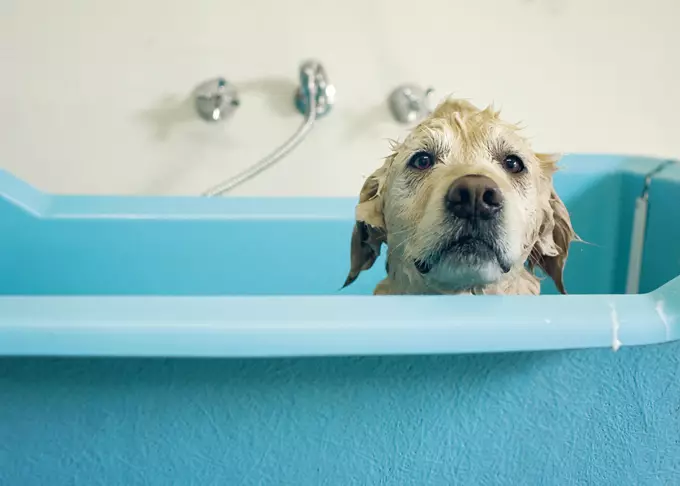Bathing your dog can often feel like an overwhelming task that many pet owners dread. However, not only is it completely feasible to give your furry friend a luxurious bath at home, but doing so can also strengthen the bond between you and your pet. Rather than spending a considerable sum at a professional grooming salon, you can harness the natural connection you share with your dog by creating a comfortable bathing experience. With a bit of preparation and the right tools, you will transform this often-dreaded task into an enjoyable moment.
Before diving into the actual bathing process, preparation is key. First, gather all supplies you’ll need: dog shampoo, a brush, towels, and a non-slip mat to make the bathing area safe and secure. Brushing your dog before the bath is essential since it helps to eliminate knots and tangles. Not only does this step make the bathing process easier, but it also removes loose hair and dirt, preventing unwanted muddy water from mixing with clean fur. Take your time with this initial step and create a calming environment; your dog will sense your intent and relax.
Choosing a suitable shampoo for your dog is more crucial than one might think. Opt for products specifically designed for dogs, as human shampoos can strip the natural oils from a pet’s skin, leading to irritation or dryness. When using standard dog shampoo, remember to dilute it to about 25% with water. This not only helps in achieving an effective lather but also ensures the product spreads easily across your dog’s coat. However, if your dog has flea shampoo, resist diluting it, as this could diminish its effectiveness. Always check labels and avoid any products containing harsh chemicals.
To make bath time less daunting for your dog, begin by wetting the body from the neck to the tail, steering clear of the head initially. This gradual approach prevents water from startling or overwhelming your pet. Use a gentle, slow stream of water—ideally from a handheld sprayer that you can control easily. Shampoo the back legs first, followed by the tail, rear, body, and finally the front legs. Tackle the head last, taking special care to avoid soap in the eyes and ears. Not only does this method make your dog feel more secure, but it systematically cleans every inch of their coat.
Once you’ve applied shampoo, the rinsing process must be thorough. Start with the head and face, then work your way down to the body, ensuring that no residue remains. Residual soap can contribute to skin irritation and dullness in fur, so take the time to rinse until the water runs clear. A well-rinsed dog will be happier and more comfortable.
After successfully rinsing away the shampoo, wrapping your dog in a towel is a must. This step not only absorbs excess water but also minimizes the likelihood of them shaking off water all over the room. Use a towel to dry your dog gently; patting rather than rubbing is ideal to avoid further tangling the fur. For a quick finish, a low-heat hairdryer can be employed, but always keep a safe distance to prevent burns. The goal here is comfort; if your dog shows signs of distress from the noise, it’s better to stick with towel drying and let them air dry naturally.
Interestingly, while we might feel inclined to bathe our pets frequently, it’s often unnecessary. Most dogs only require a bath once a month to maintain healthy skin and fur. Batting more than that could lead to dry skin and discomfort. By developing a routine that combines brushing, bathing, and drying into a simple zen experience, you’ll encourage your dog to enjoy bath time rather than fear it. Just think of it as a spa day—one that you and your dog can look forward to monthly!
Mastering the art of giving your dog a bath at home is an accessible goal. With right tools, a proper approach, and an understanding of your dog’s needs, bathing can be a bonding experience rather than a chore. Build your confidence and enjoy the connections that flourish during moments spent together.

